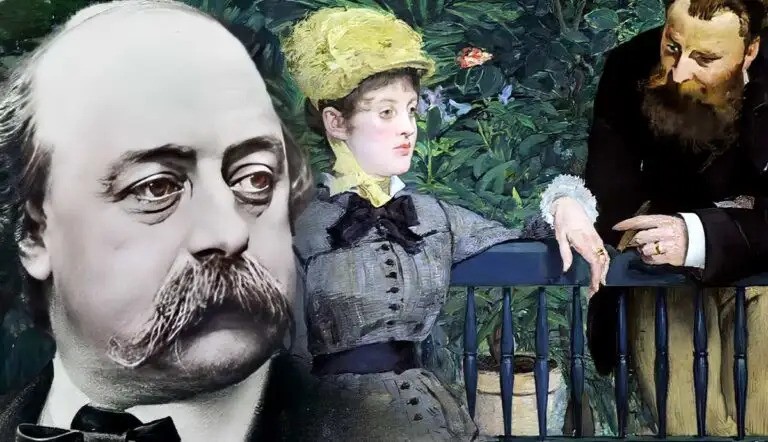“Joyciano” for me is a journey of constant discovery, where each reading of Joyce’s works reveals new layers of meaning. It was through “Ulysses” that I learned to appreciate the beauty of stream-of-consciousness, reflecting my own thoughts and emotions. Reading “Joyciano” has improved my literary comprehension while also fostering my self-awareness.
“Joyciano” refers to the dedicated study of James Joyce’s works, exploring his innovative narratives and themes. This scholarly field delves into the complexities of his texts, revealing profound insights into human experience.
In this article on “Joyciano,” we will delve into James Joyce’s life and his major works, including “Dubliners,” “A Portrait of the Artist as a Young Man,” “Ulysses,” and “Finnegans Wake.” We’ll explore recurring themes like identity, language, and exile in his literature.
What Does “Joyciano” Mean In Literary Studies – Key Aspects of Joyciano Studies!
“Joyciano” is a term used to describe the study and analysis of the works of James Joyce, a famous 20th-century writer. This field involves looking closely at his books and stories to understand their deeper meanings, unique writing styles, and the themes he explored.
- Focus on Major Works:
- Dubliners: A collection of short stories depicting everyday life in Dublin.
- A Portrait of the Artist as a Young Man: A novel about a young man’s growth into an artist, mirroring Joyce’s own life.
- Ulysses: A complex novel that takes place over a single day in Dublin, using various innovative writing techniques.
- Finnegans Wake: Known for its challenging language and structure, this book delves into the cyclical nature of history and human experience.
- Themes:
- Identity and Self-Discovery: Characters often explore who they are and their place in the world.
- Language and Communication: Joyce’s unique use of language to express complex thoughts and emotions.
- Religion and Nationalism: Critical views on the influence of religion and national identity.
- Exile and Alienation: Many of Joyce’s characters experience a sense of not belonging.
- Narrative Techniques:
- Stream-of-Consciousness: A writing style that mimics the natural flow of thoughts in a character’s mind.
- Innovative Structures: Joyce often used different styles and formats to tell his stories, making each work unique and multifaceted.
- Scholarly Field:
- Joycean Studies: This academic field includes conferences, journals, and societies where scholars share their insights and research on Joyce’s works.
- Bloomsday: An annual event celebrated on June 16, honoring the day on which the events of “Ulysses” take place. Fans of Joyce participate in readings, performances, and discussions about his work.
Why Study Joyciano?
Studying Joyciano helps readers and scholars appreciate the depth and complexity of James Joyce’s writing. His works offer rich insights into human nature, culture, and society, making them timeless pieces of literature.
Engaging with Joyciano studies allows one to better understand how literature can challenge and expand our perspectives.
How Did James Joyce Influence Modernist Literature – Journey With Joyce’s Masterpieces!

James Joyce had a deep impact on modernist literature by introducing new ways of writing and exploring deeper themes. His influence can be seen in several key aspects:
- Narrative Techniques:
The writing technique known as “stream-of-consciousness,” which captures the unbroken flow of ideas and emotions within a character’s head, was invented by Joyce.
Joyce was able to depart from conventional linear storylines and dive deeply into the subjective feelings and inner lives of her characters because of this technique.
- Experimental Structures:
By experimenting with non-linear stories, different perspectives, and fragmented narratives, he questioned traditional storytelling frameworks. For instance, “Ulysses” takes place in Dublin over the course of a single day, yet each chapter has a different narrative form and style.
- Exploration of Human Consciousness:
Joyce’s works delve into complex themes such as identity, alienation, and the nature of reality. Characters in his novels often grapple with their sense of self and their place in the world, reflecting the uncertainties and challenges of modern life.
- Language and Wordplay:
Joyce is renowned for his innovative and lighthearted use of language in his writing. He combined several dialects, languages, and literary allusions to produce complex, multifaceted compositions that demand readers’ active participation.
- Legacy and Influence:
Joyce’s innovative approach to literature influenced later modernist writers and paved the way for the development of postmodern literature.
Authors like Virginia Woolf, William Faulkner, and Samuel Beckett were inspired by Joyce’s experimentation with form and language.
James Joyce’s impact on modernist literature lies in his ability to push the boundaries of what literature could achieve, both stylistically and thematically.
His works continue to be studied and admired for their complexity, creativity, and lasting relevance in literary scholarship.
Read: Stealthother.site – Your Guide to Online Privacy!
What Are The Major Works Of James Joyce Analyzed In Joyciano Studies – Explore The World Of Joyce!
In Joyciano studies, scholars closely examine several major works by James Joyce, exploring their themes, styles, and contributions to literature:
- Dubliners: Joyce’s collection of short stories published in 1914. Each story offers a snapshot of life in Dublin, portraying characters facing moments of epiphany or realization about their lives and society.
- A Portrait of the Artist as a Young Man: Published in 1916, this novel follows the early life of Stephen Dedalus, a character loosely based on Joyce himself. It traces Stephen’s journey from childhood to young adulthood, exploring his struggles with religion, nationality, and his desire to become an artist.
- Ulysses: Considered Joyce’s masterpiece, published in 1922. It takes place over a single day, June 16, 1904, in Dublin, following the journeys of Leopold Bloom and Stephen Dedalus. Each chapter employs different narrative styles, including stream-of-consciousness, reflecting the characters’ thoughts and experiences.
- Finnegans Wake: Joyce’s final novel, published in 1939. It is known for its experimental language and complex structure, blending multiple languages, puns, and wordplay. The novel explores themes of history, mythology, and the cyclical nature of life.
How Can One Start Exploring Joyciano Studies – Discussing Joyce’s Works!
The first step in studying Joyciano is to become well-versed in James Joyce’s writings, starting with “Dubliners,” “A Portrait of the Artist as a Young Man,” “Ulysses,” and “Finnegans Wake.”
These books provide fundamental building blocks for comprehending Joyce’s inventive storytelling methods and rich thematic complexity.

Study guides and introductory materials offer valuable insights into the intricacies of Joyce’s writing style and the socioeconomic circumstances he examines, enabling readers to dive deeper.
The layers of meaning buried in Joyce’s use of stream-of-consciousness, linguistic experimentation, and investigation of identity and culture can be revealed by adding to this with critical studies by academics.
Participating in online forums, book clubs, or local study groups facilitates the exchange of interpretations and perspectives, so augmenting one’s comprehension.
Attending Joyce lectures and conferences also offers the chance to hear from specialists in the field and remain up to date on the latest findings in Joyce studies.
Read: Käätjä – Tips And Insights!
Frequently Asked Questions:
1. What Is The Significance Of Bloomsday In Joyciano Studies?
Bloomsday, celebrated annually on June 16th, commemorates the events of James Joyce’s “Ulysses.” It includes readings, performances, and events worldwide that honor Joyce’s literary legacy and engage with his themes and characters.
2. How Does James Joyce’s Use Of Language Impact Joyciano Studies?
Joyce’s linguistic innovations, including multilingual puns and experimental wordplay in works like “Finnegans Wake,” challenge readers and scholars to explore new dimensions of language and meaning within his texts.
3. What Role Does Dublin Play In Joyciano Interpretations?
Dublin serves as a central backdrop in Joyce’s works, symbolizing both a physical location and a psychological state. Analyzing Dublin’s portrayal in “Dubliners” and “Ulysses” reveals Joyce’s deep connection to the city and its impact on his characters.
4. How Has The Joyciano Scholarship Evolved Over Time?
Joyciano studies have evolved from early literary critiques to encompass interdisciplinary approaches, including linguistics, cultural studies, and gender studies. This evolution reflects ongoing interpretations of Joyce’s works and their relevance in contemporary contexts.
Conclusion:
Joyciano studies show how James Joyce’s unique storytelling and in-depth examinations of identity, language, and consciousness have had a lasting impact on literature. Scholars and fans alike are enthralled with Joyce’s writings, which prompt constant interpretations and conversations that emphasize the enduring significance of his literary heritage.
Read more:



